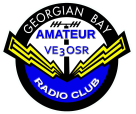2021-02-12, 13:25:26
(2021-02-11, 17:29:30)VA3-GUF-Frank Wrote:(2021-02-11, 15:30:47)VE3PQ Paul Wrote: Frank, SORRY,, But ,, as a retired RF engineer with over 50 years experience in the broadcast and communications industries, and a 60+ year active radio amateur, I feel qualified to comment on erroneous claims and statements made in your recent presentation on 4 Bay dipole antennas.. I am very familiar with these antennas, especially the Sinclair Radio products (SRL) designed and manufactured in Maple Ontario since about 1955.. I worked with the Sinclair engineers in 1975 to design and build special 2 bay VHF and UHF antennas for the CN Tower broadcasters..
Firstly you stated,, “The 4 bay unit did not have any 1/4 wave matching coax - - - - - - - “
Impossible ..... Each dipole , whether it is fed singularly, or as part of an array has a 50 Ohm coaxial feed point (cable), yet the centre feed point of a folded dipole element is 300 Ohms. The 50 to 300 impedance transition is achieved by connecting a 1/4 wavelength section of 125 Ohm cable in series with the 50 ohm “tail” and sliding it inside the outer tubing of the radiator just above the feed point.. It would not be visible to you unless you pulled the cable assembly out of the dipole or cut the aluminum tubing (dipole) open..
Why 125 Ohms? The standard formula for determining the impedance is the SquareRoot of the product of the two impedances.. ( SquareRoot of (300 x 50 ) = 122.474 ( nearest available value = 125 Ohms).. And,, to determine the physical length we must remember that this is 1/4 wavelength in
coax, NOT free space so the wavelength calculated by the familiar formula (468 / F..mhz) must be corrected by applying the Velocity Factor of the cable...
Secondly,, You said “The 1/4 matching coax ---------- would probably be needed for 2 bay or 1 bay ------ but was not used on the 4 bay ---.”
Not really correct,,, The 1 bay antenna will not require any addtional matching because it is already a 50 Ohm antenna... But all the multi element, 2, 4 or 8 bays systems absolutely will.. For example if you connect 2 dipoles for a 2 bay system you will have to match 50/2 = 25 Ohms back up to 50 Ohms with a 1/4 wavelength piece of 35 Ohm cable.. ( cable impedance and length again determined as above) The 4 and 8 bay arrays are even more complex.
Hope this helps sort out some of the confusion that seems to be out there amongst the members. I could go on,, but enough for now....
73 de Paul,, VE3PQ
Thank you Paul for the additional clarifications and time to provide this info, much appreciated.
I was wondering if you could share your thoughts on the attached photo of the wires taken from the grounded side of the 70cm antenna and how they relate to the matching requirement. My thoughts are the tube is most likely acting like a shield in this case for both the wire types shown in the photo. The red arrow is where the red point of the wire was soldered to the cable feeding the antenna inside the tube. The insulated wire from the red point, appears it might be unshielded 7 strand core RG213 till the black points, where it is connected to a tube insulated single strand core (slightly less than 1mm, may be .75mm to .8mm diameter) with air gap spacing done by a plastic spiral. This single wire core portion is 11.5cm long inside the insulating tube and sits entirely inside the grounded side of the antenna tubing.
If this following additional info is relevant in your thoughts, the entire antenna cabling including the phasing portions up to the offset end is RG213 cable (red arrow connection). Any info you provide would help the members better understand some of the techniques used to make these antenna and claify further details on their make-up.
Cheers
Frank
VA3-GUF / VE0-GUF / VE0-VET




